From local history and culture to international politics and World War II, museums in Fredericksburg, Texas, cover a wide variety of topics. There are historic buildings to see right in downtown, or a short drive will take you to a former president’s home. Whether you’re looking for living history reenactments or engaging chemistry experiments that make science cool, the area has a lot to offer.
Here’s a look at some of the Fredericksburg museums to check out on your visit.
National Museum of the Pacific War
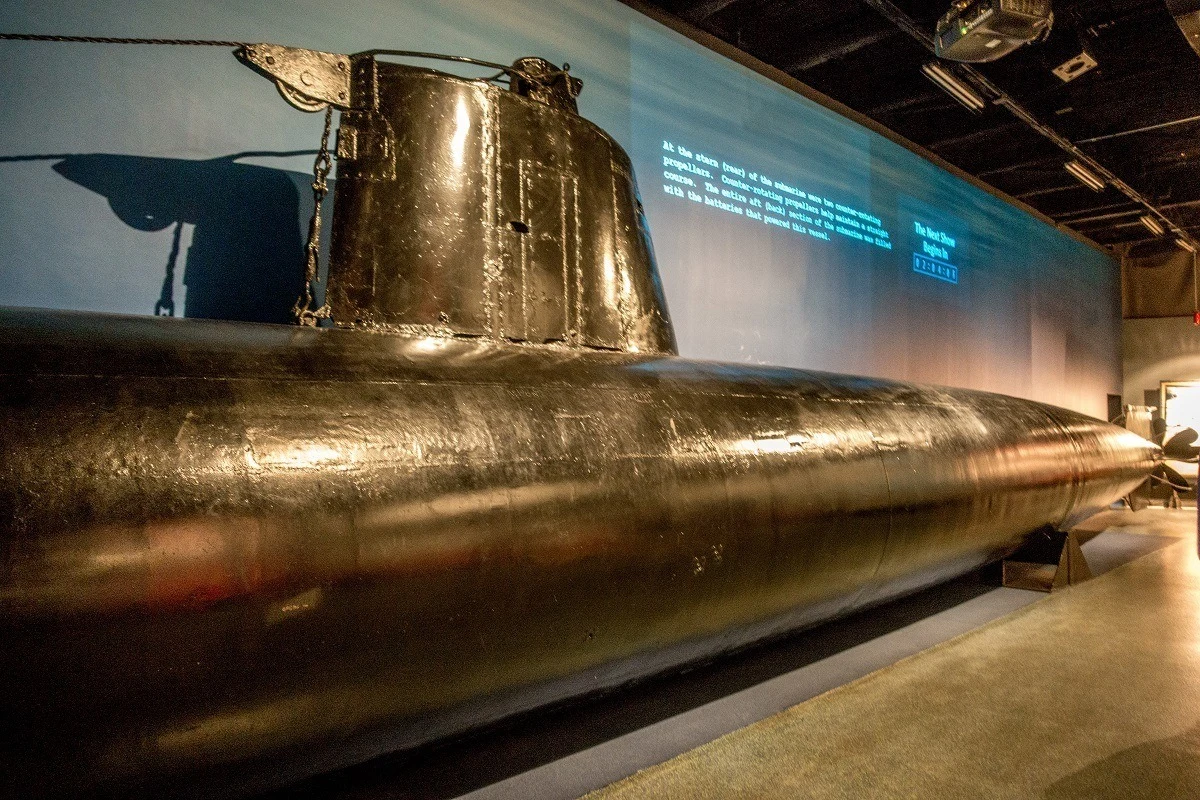
With thousands of artifacts, airplanes, tanks, and Smithsonian-quality displays, the National Museum of the Pacific War brings the conflict in the Pacific Theater to life in meticulous detail.
The museum’s buildings include two traditional spaces that focus on the World War II battles in the Pacific and on Admiral Chester Nimitz—Commander in Chief of the US Pacific Fleet, who was born in Fredericksburg. A few blocks away, an outdoor Pacific Combat Zone holds battle reenactments that give visitors a glimpse into the challenges of war.
Much of the museum focuses on politics, battles, and the harshness of war. But, outside the main building, the Japanese Garden of Peace provides a counterpoint to the tragedy. It includes lots of items with symbolic meaning, including stones, raked gravel, and a water feature. A gift in honor of the friendship between Admiral Nimitz and Japan’s Admiral Togo Heihachiro, the garden is meant to be a space for reflection and is free to visit.
If you have even a minimal interest in history and are wondering what to do in Fredericksburg, make sure the National Museum of the Pacific War is on your list.
Fort Martin Scott
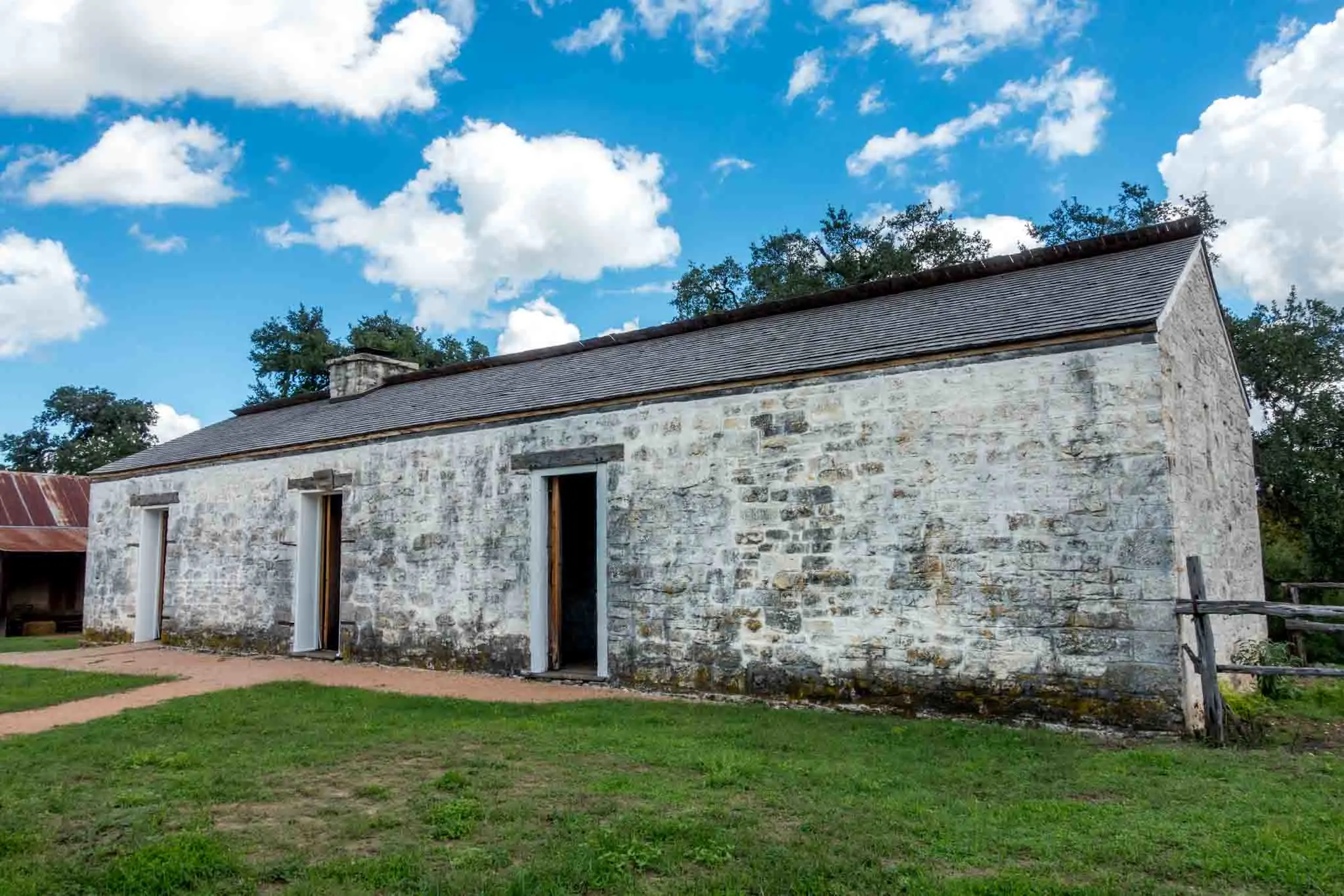
One of the free museums in Fredericksburg, Fort Martin Scott is an historical site dating from the mid-1800s. When it was originally established, the fort was the first military post on the western frontier of Texas, and it was designed to protect travelers and settlers in the area.
Highlights of the former base include original and reconstructed buildings such as the post commander’s quarters, troops’ houses, a blacksmith store, and other buildings critical for daily activities on the frontier. Visitors can take a self-guided tour to learn about life and conflict in the area when the first European settlers arrived. There are also regular living history reenactments.
LBJ National Historical Park
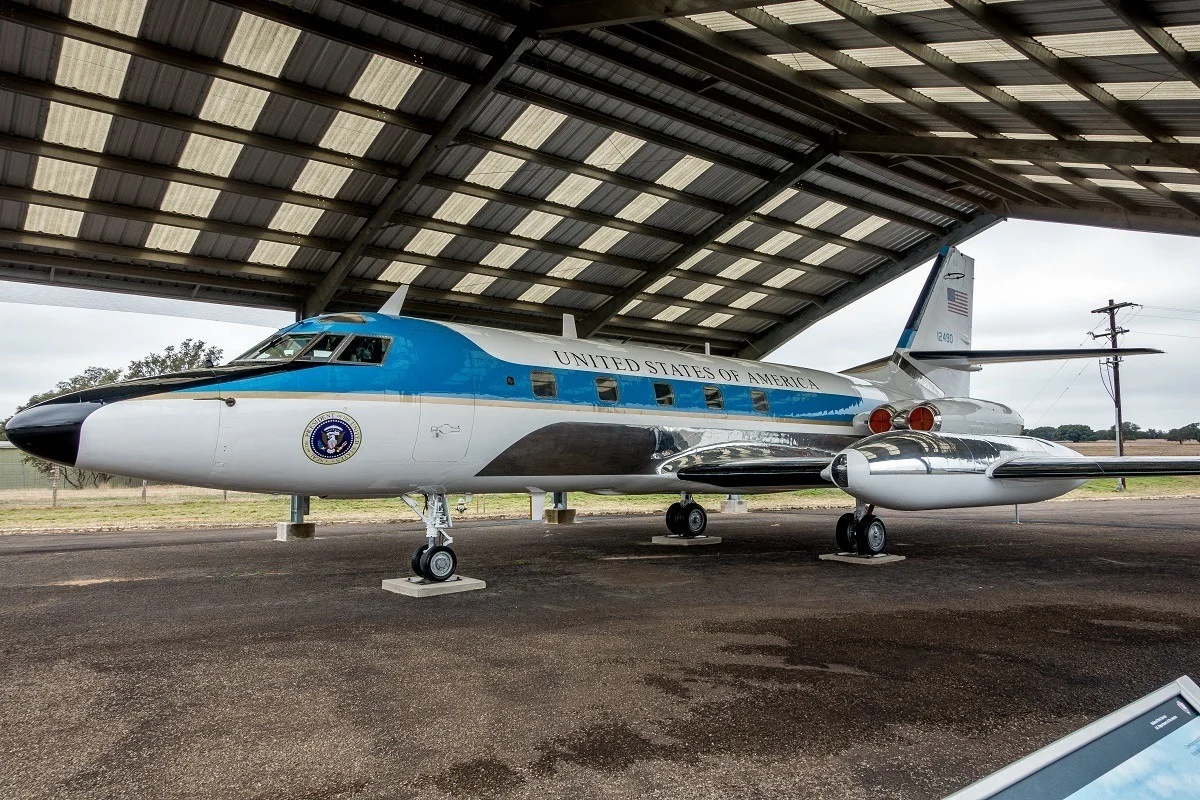
The 36th president of the United States, Lyndon B. Johnson, spent much of his life in central Texas. Just a few miles from Fredericksburg, there are historical sites commemorating aspects of his life in Stonewall and Johnson City. Together, they are the Lyndon B. Johnson National Historical Park.
Stonewall is home to the LBJ Ranch, which includes important places from the president’s life. Visitors can take a self-drive tour of the ranch to see the one-room school LBJ attended, his grandparents’ house, and the Johnson family cemetery where both the former president and first lady are buried.
A tour through the Texas White House where Johnson spent about one-quarter of his presidency transports you back to the 1960s with a fascinating look at the man behind the office. Visitors can also see his cars—including a famous amphibious vehicle—and his presidential plane. It’s one of the most interesting attractions in the Hill Country. (Note: as of June 2022, the Texas White House is temporarily closed for repairs, but other sites are viewable.)
Nearby, Johnson City is the location of LBJ’s boyhood home and other landmarks significant in his early life and his family’s history as the founders of the town.
Sauer Beckmann Living History Farm
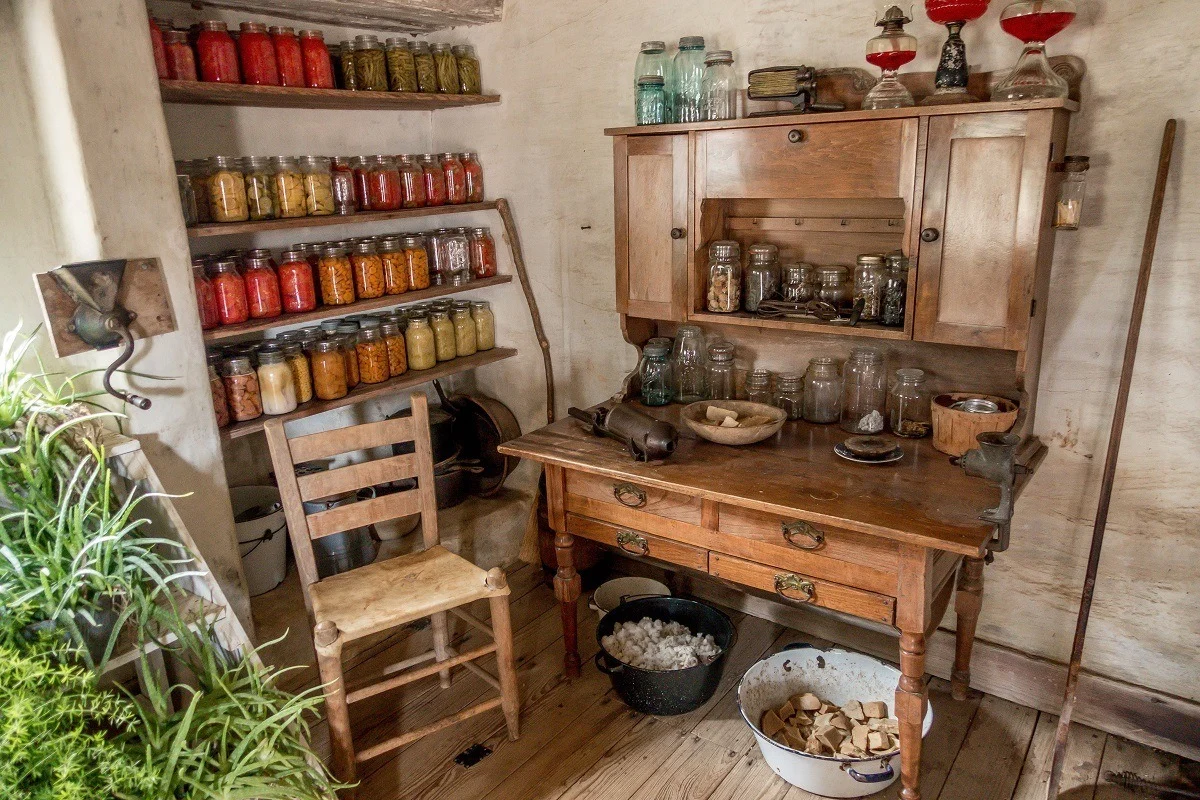
A visit to the Sauer-Beckmann Living History Farm provides a look at farm life in the early 1900s in central Texas. As the name indicates, it’s a place where history is alive. The interpreters do all the daily chores for living from milking the animals and shearing the sheep to canning vegetables, knitting, and working in the blacksmith shop.
With all the activity, there is always something interesting to see on the farm. The interpreters are here to demonstrate, but their main job is to answer questions and share with curious guests what life is like.
Located at the Lyndon B. Johnson State Park and Historic Site, the farm is open almost every day of the year. Many of the activities change with the seasons, so it can be a fun place to visit more than once.
Pioneer Museum
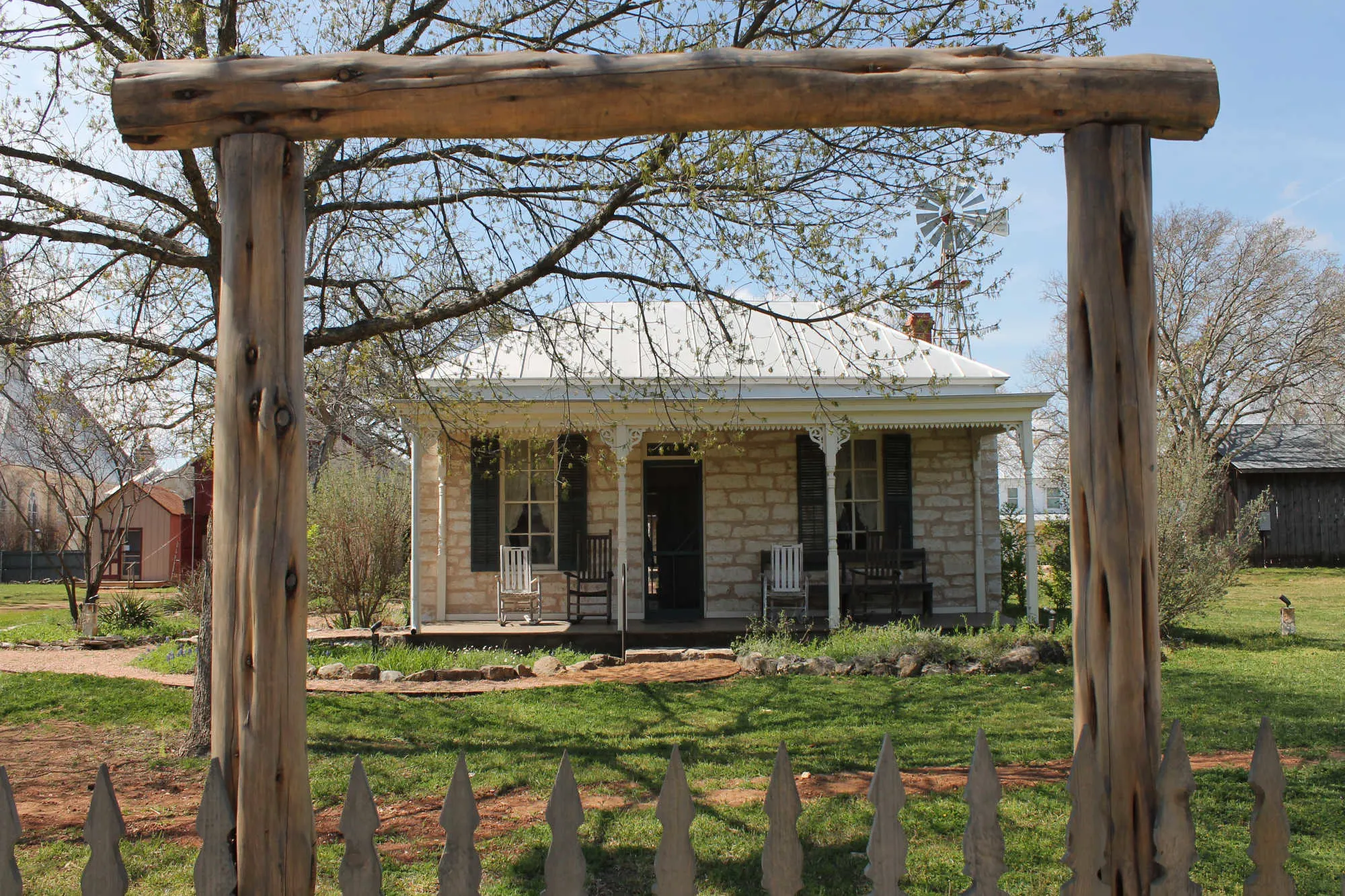
Fredericksburg has a rich German heritage because of its settlers who arrived in the area in the 1840s. The Pioneer Museum tells their story, illuminating what life was like for the early pioneers.
The museum, which is run by the Gillespie County Historical Society, is housed in a collection of 11 buildings, many of which are exhibits in themselves. Visitors can see homes, a log cabin, the social hall, the Weber Sunday House, and the White Oak School, among others. Demonstrations and thousands of artifacts illustrate daily life, culture, and work in Fredericksburg, which was one of the first German towns in Texas.
The museum hosts regular walking tours that give an in-depth look at the history of the area. There are also events throughout the year that include costumed interpreters or focus on special aspects of the pioneer culture—the Christmas celebration is particularly popular.
Vereins Kirche
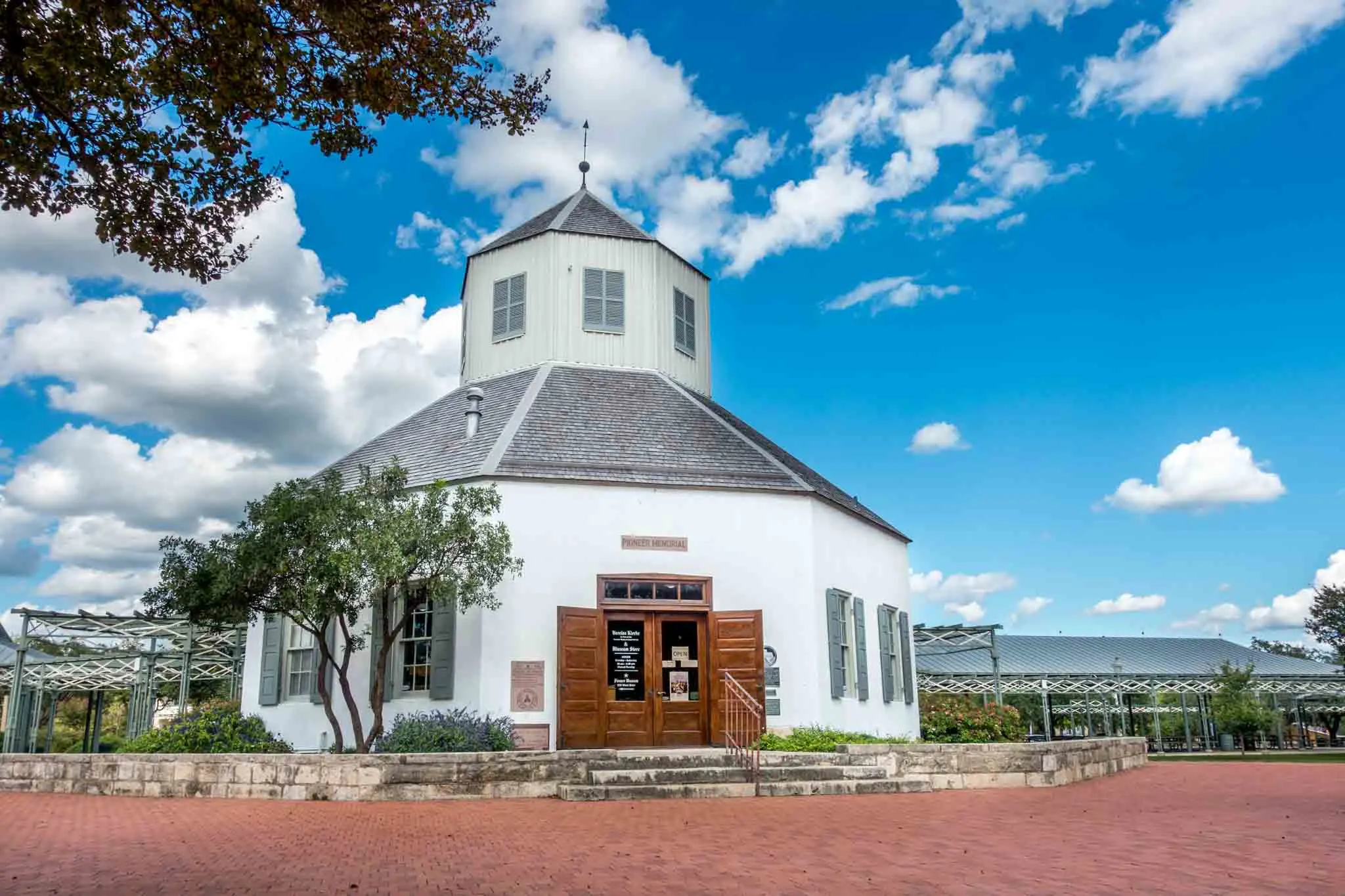
The town’s most recognizable building thanks to its octagonal shape and prominent position on Marktplatz, the Vereins Kirche (Society Church) was originally built in 1847. It was the first public building and was used as a town hall, school, and church for all faiths.
Today, the reconstructed Vereins Kirche is one of several history museums in Fredericksburg and is at the heart of the town’s annual festival, Oktoberfest. An extension of the Pioneer Museum, it features a large collection of photographs and artifacts related to the settlement and history of the Texas Hill Country. Visitors can learn about everything from the original settlers’ treaty with the Comanche Indians to religion and community on the frontier.
Science Mill
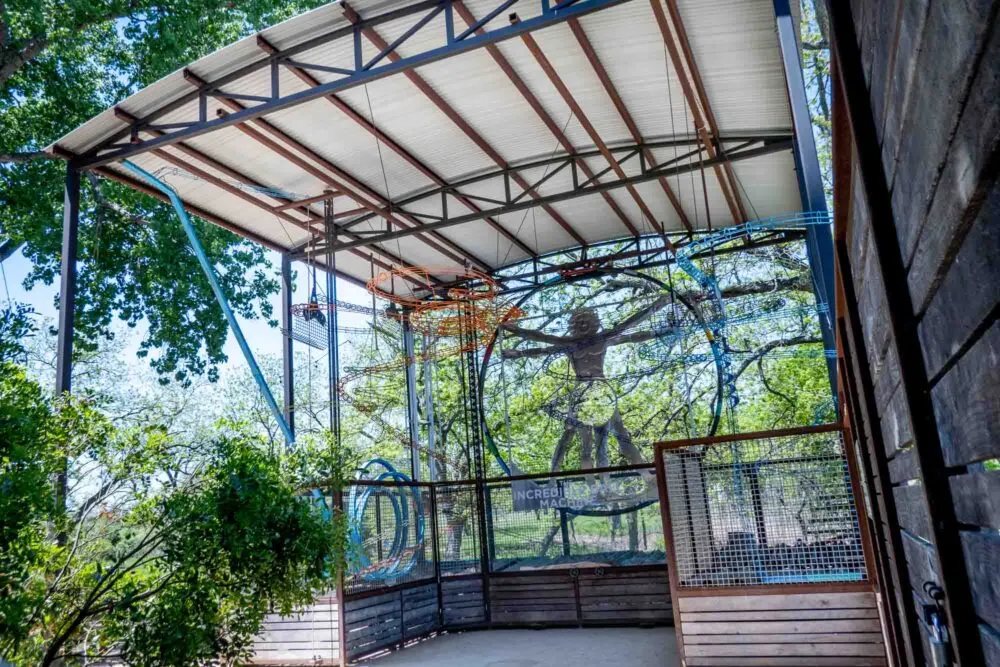
One of the best places for kids of all ages, the Science Mill is a highly interactive museum with exhibits on a broad range of scientific and technological topics. Interestingly, it is housed in an historic feed mill from the 1880s, repurposing an industrial space into a place designed to interest children in cutting-edge careers.
The Science Mill’s 50+ exhibits cover energy, fossils, robotics, and other engaging topics. The hands-on areas let kids learn about paleontology by digging for bones and step into the body of a pterosaur using virtual reality. They can also learn about aquaponics in the greenhouse and play with color-changing panels to understand how animals adapt to their environments, among many other interactive exhibits.
Trained Explainers are available through the museum to answer kids’ questions and help them get their most out of their visit.
Laura Longwell is an award-winning travel blogger and photographer. Since founding Travel Addicts in 2008, she has written hundreds of articles that help over 3 million people a year get the most out of their travel. In that time, she has visited nearly 60 countries on 5 continents, often returning to favorite destinations over and over again. She has a deep love of history, uncovering unexpected attractions, and trying all the good food a place has to offer.
In addition to Travel Addicts, Laura runs a site about her hometown of Philadelphia—Guide to Philly—which chronicles unique things to do and places to see around southeastern Pennsylvania. Her travel tips and advice appear across the web.
